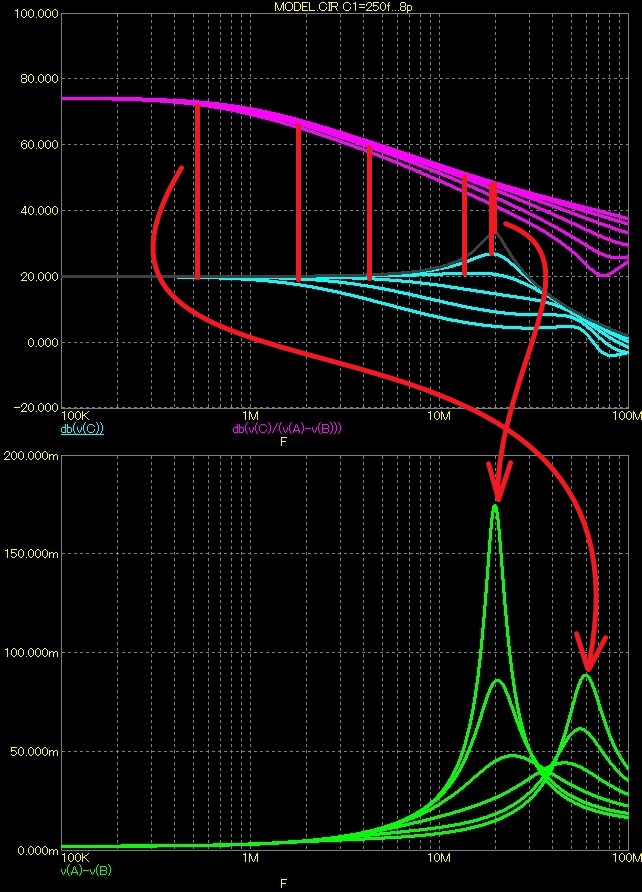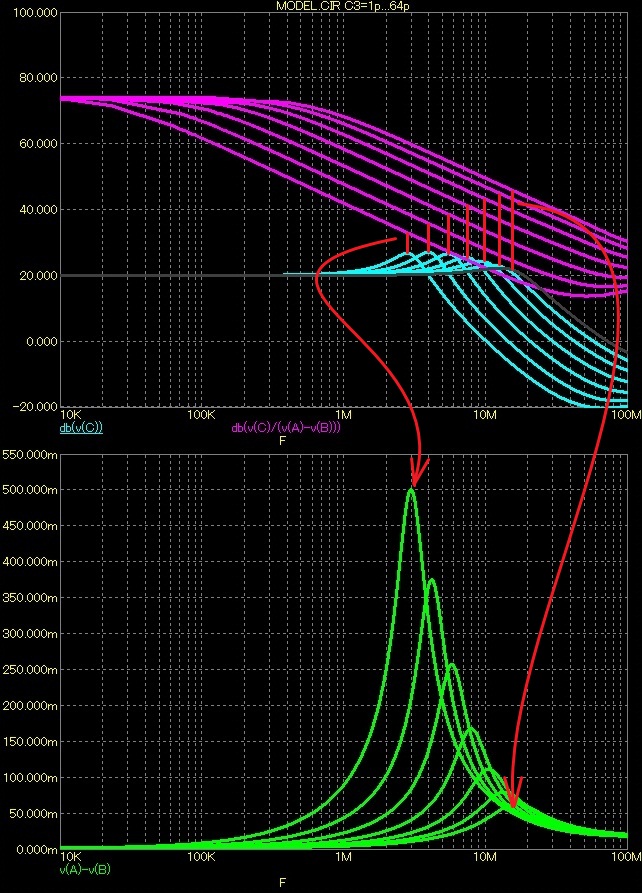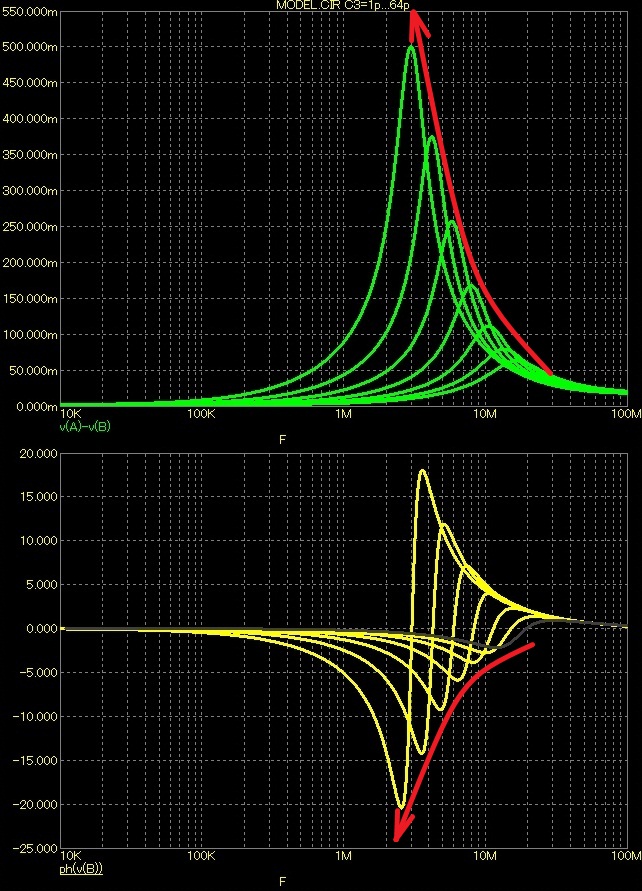We are not interested for your prehistory circuits from the year 65' or so...
Please Do I just what you're interested. I do not know of anyone who did Vdif dependence and feedback, even in 1965. Can you please give a link? I'm interested.
I wish a beautiful day

What is direction of your claims ? At your pages you say, that is correlation between value Vdif and " transistor sound " - do you have some credible evidence proof for it ? Independent listening tests, made by others, not by you ?
As I read it:
He sees a delay between the input signal and the output signal. (Another way of describing phase shift.) He wonders if it is audible.
He sees a delay between the input signal and the output signal. (Another way of describing phase shift.) He wonders if it is audible.
Mr. Fedemann is posting only simulations and claims, never showed measurements (distortion, SR with load..) of really operating (and reliable) power amplifier or any proofs for his claims. Never answered direct questions, only with "side steps"...But 3D simulations of PCB are nice🙂
His last finding-local NFB is very bad, only valuable is global NFB...
His last finding-local NFB is very bad, only valuable is global NFB...
Last edited:
As I read it:
He sees a delay between the input signal and the output signal. (Another way of describing phase shift.) He wonders if it is audible.
Unless it is a varying phase shift (with time, frequency, amplitude) how would you tell?
What causes phase shift in a normal audio circuit? There must be some capacitors somewhere.
Unless it is a varying phase shift (with time, frequency, amplitude) how would you tell?
What causes phase shift in a normal audio circuit? There must be some capacitors somewhere.

Phase shift caused by the internal structure of the transistor. I use such a model.
Distortion is inversely related to reserve profits. The overall feedback gain improves. Local feedback gain worse.




As I read it:
He sees a delay between the input signal and the output signal. (Another way of describing phase shift.) He wonders if it is audible.
It's not about whether to hear the delay. Long delays leads to a small reserve of profit. A small reserve of profit leads to a large distortion at high frequencies. The input transistors operate in the nonlinear region. There is a reciprocal modulation and interference. This is heard.
Last edited:
Your claims are based on parameters of simplest bjt differential amplifier. And what about if you use linearization of this stage ? In this case amp will have not transistor sound ? You can find hundreds examples, how you can to do it - visit Prague, there Patent commission and maybe your knowledges will rise....
It's not about whether to hear the delay. Long delays leads to a small reserve of profit. A small reserve of profit leads to a large distortion at high frequencies. The input transistors operate in the nonlinear region. There is a reciprocal modulation and interference. This is heard.
Are these capacitances relevant for such low frequencies as in audio?
Your claims are based on parameters of simplest bjt differential amplifier. And what about if you use linearization of this stage ? In this case amp will have not transistor sound ? You can find hundreds examples, how you can to do it - visit Prague, there Patent commission and maybe your knowledges will rise....
Your offer a very bad solution, high-frequency gain is inadequate and high-frequency distortion is very high.
Are these capacitances relevant for such low frequencies as in audio?
Such rotation phase, there is no transistor. If the capacitor big enough, not distracting when listening.
Dear Federmann,
there is an outstanding and SUPERB TOPOLOGY you should simply check out in the following thread bellow, I believe it may be better even than HQQF(?), Stee makes outstanding designs to its fullest symmetry with help of Photoshop, I think you two have many things in common and maybe can collaborate, what do you think of his designs?
http://www.diyaudio.com/forums/solid-state/156685-jfet-audio-buffer.html
Cheers Rudolf the Red Nose
there is an outstanding and SUPERB TOPOLOGY you should simply check out in the following thread bellow, I believe it may be better even than HQQF(?), Stee makes outstanding designs to its fullest symmetry with help of Photoshop, I think you two have many things in common and maybe can collaborate, what do you think of his designs?
http://www.diyaudio.com/forums/solid-state/156685-jfet-audio-buffer.html
Cheers Rudolf the Red Nose

Dear Federmann,
there is an outstanding and SUPERB TOPOLOGY you should simply check out in the following thread bellow, I believe it may be better even than HQQF(?), Stee makes outstanding designs to its fullest symmetry with help of Photoshop, I think you two have many things in common and maybe can collaborate, what do you think of his designs?
http://www.diyaudio.com/forums/solid-state/156685-jfet-audio-buffer.html
Cheers Rudolf the Red Nose
Thank you, very nice.
I limited my suggestions to 2 degrees. Vdif not larger than 5mV at 100kHz.
Thank you, very nice.
I limited my suggestions to 2 degrees. Vdif not larger than 5mV at 100kHz.
Stee Topology is extreme, it's only 1,4 degrees, Topology >>>CFET BUFFER<<< verified Photoshop SIMULATIONS!

Please click here --->http://www.diyaudio.com/forums/attachments/solid-state/150830d1261245600-jfet-audio-buffer-cfet-buffet.gif
Full Balance! ---> http://www.esafono.it/What do you think? 😕
- Status
- Not open for further replies.
- Home
- Amplifiers
- Solid State
- Influence of the delay amplifiers for listening characteristics

